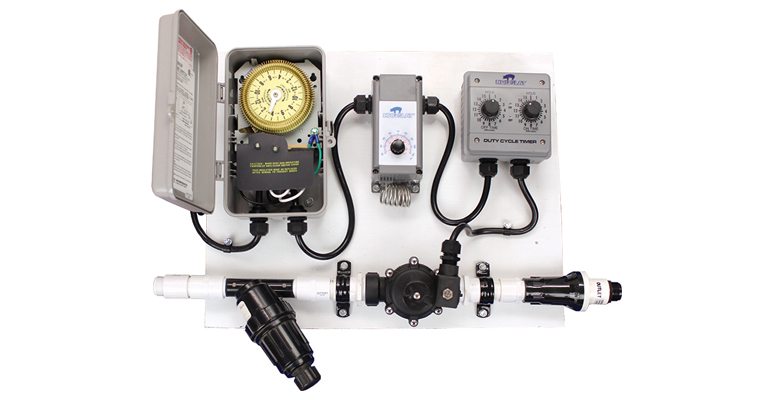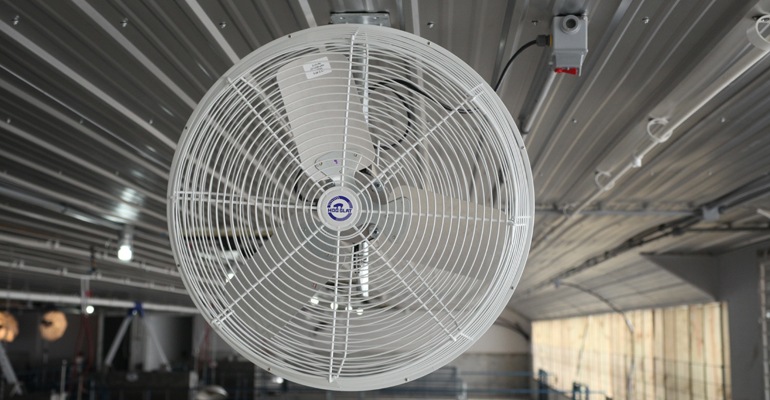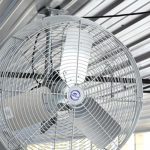Understanding how fogger systems work will help you manage them more effectively.
We commonly think of cool cell systems when we think of evaporative cooling in hog facilities. However, fogger systems also cool pigs by evaporation; understanding how will help you manage these systems more effectively.
As incoming air passes through cool cell pads, the energy used to evaporate the water lowers the air temperature. The resulting air cools the pigs indirectly.
Fogger systems wet the skin of the pigs, as the water evaporates off their skin the pigs are directly cooled. The key to using a fogger system correctly is to set up this cycle of wetting and drying the pigs.

Control unit with cycle timer, thermostat and 24-hour time clock
First, set the on time to thoroughly wet the pen area, usually two to four minutes. Next, clock the time it takes for the pen and pigs to dry off completely. This period becomes the off time on the controller. The off time is typically 15 to 20 minutes, but can be longer with high outside humidity. The most common mistake is not allowing enough off time for the pen to dry.
You will also need to include a 24-hour timer to shut the system off at night. Humidity levels tend to rise as the outside temperature decreases, resulting in lower evaporative rates that limit the cooling effect.
While we refer to this as a fogger system, in fact, you should select a nozzle that produces coarse droplets. A larger size droplet falls quicker, wetting the pigs without drifting into the feeders. A fine mist will increase the relative humidity in the barn, reducing the rate of evaporation and may cause respiratory problems.
You should also design the system to wet no more than half the pen. Mounting the foggers 4’6” high along the outside pen walls, with the nozzles pointing down at a 45-degree angle, provides an adequate area for wetting the pen.

Stir fans provide additional air movement in naturally ventilated buildings.
A final note, effective evaporation only occurs when there is substantial air movement across the pigs. Tunnel-ventilated buildings supply sufficient airflow at 300 to 400 feet per minute. For naturally ventilated buildings; it is necessary to add stir fans to provide air movement when there is no outdoor breeze. To read more about stir fans go to Direct cooling with stir fans and sprinklers.


